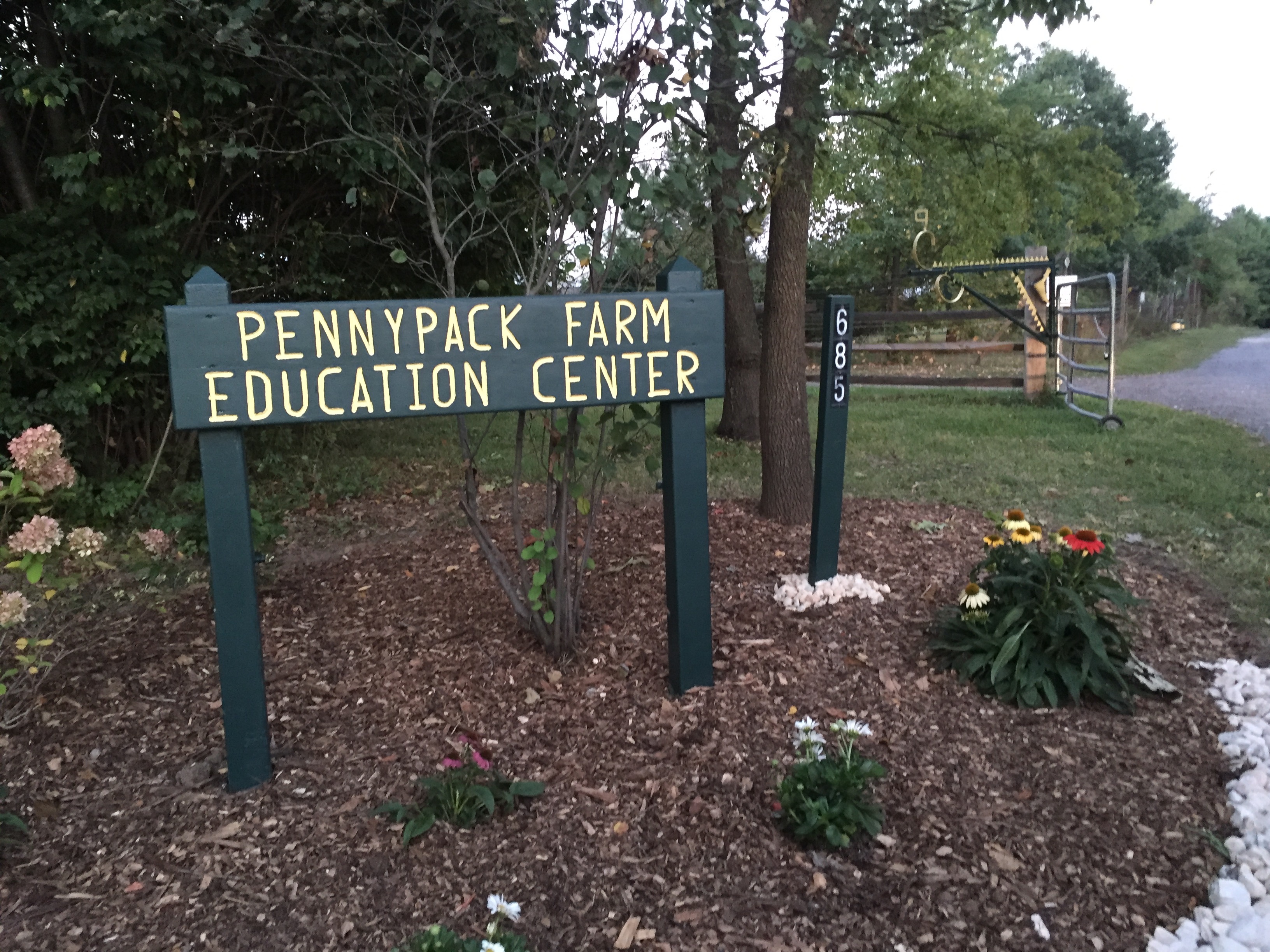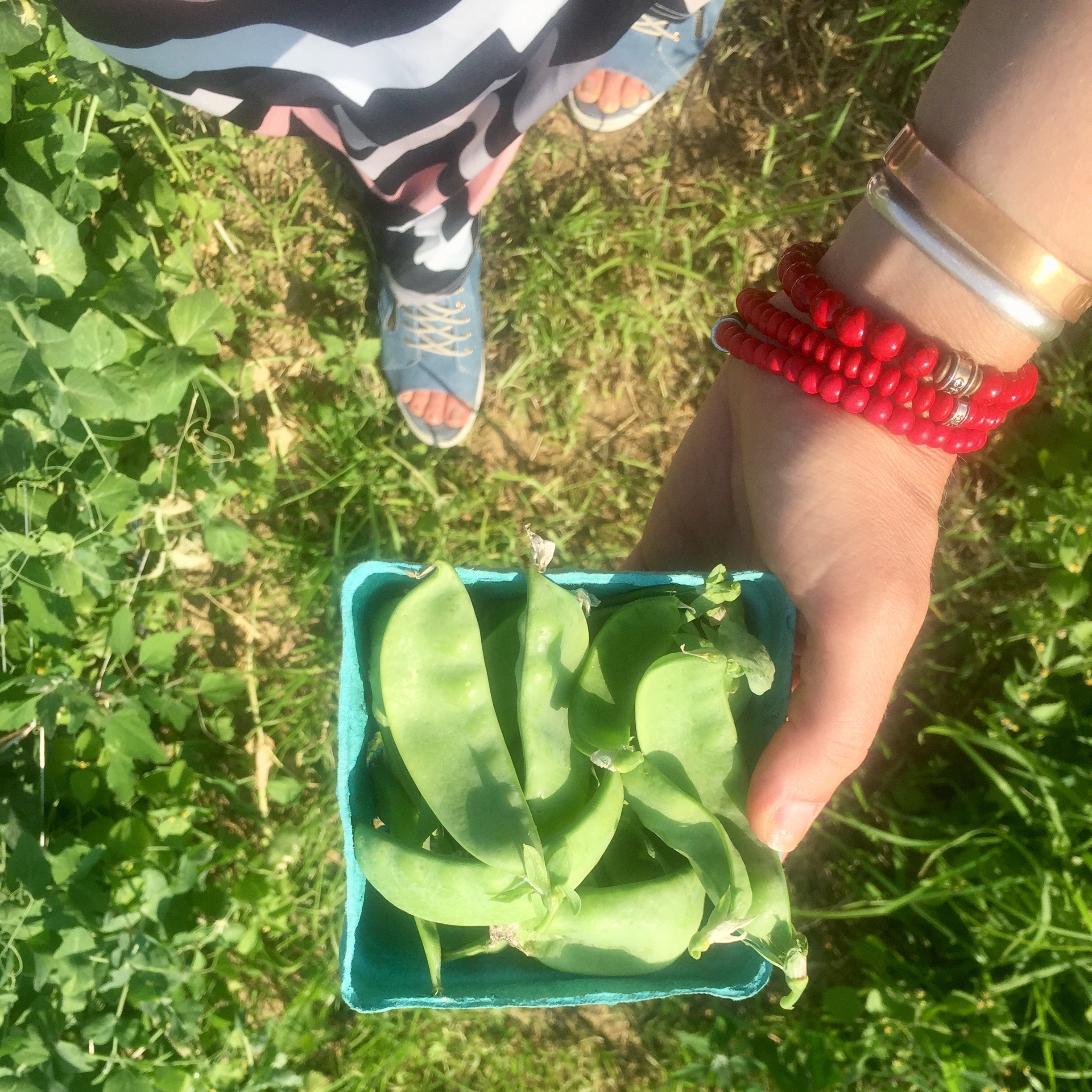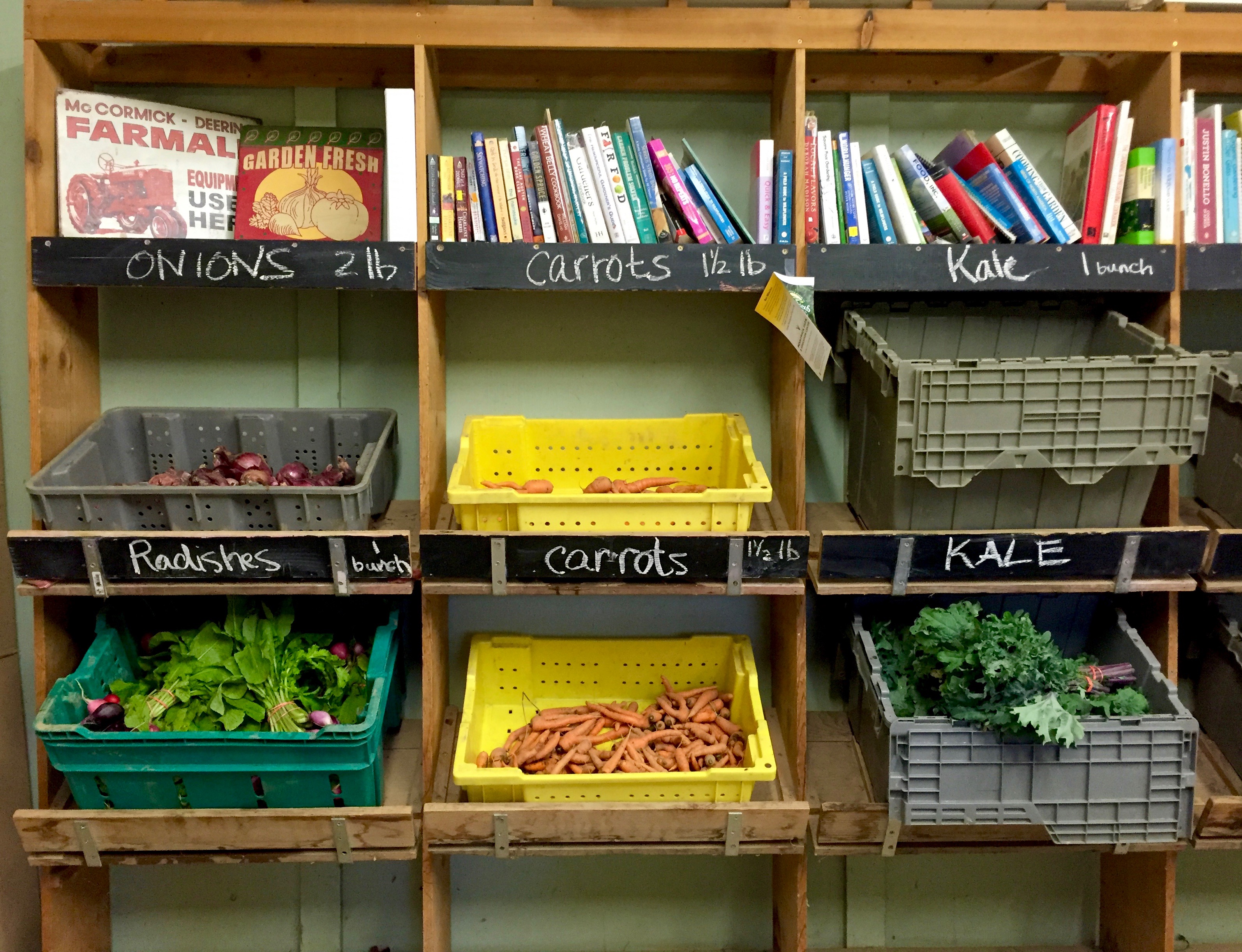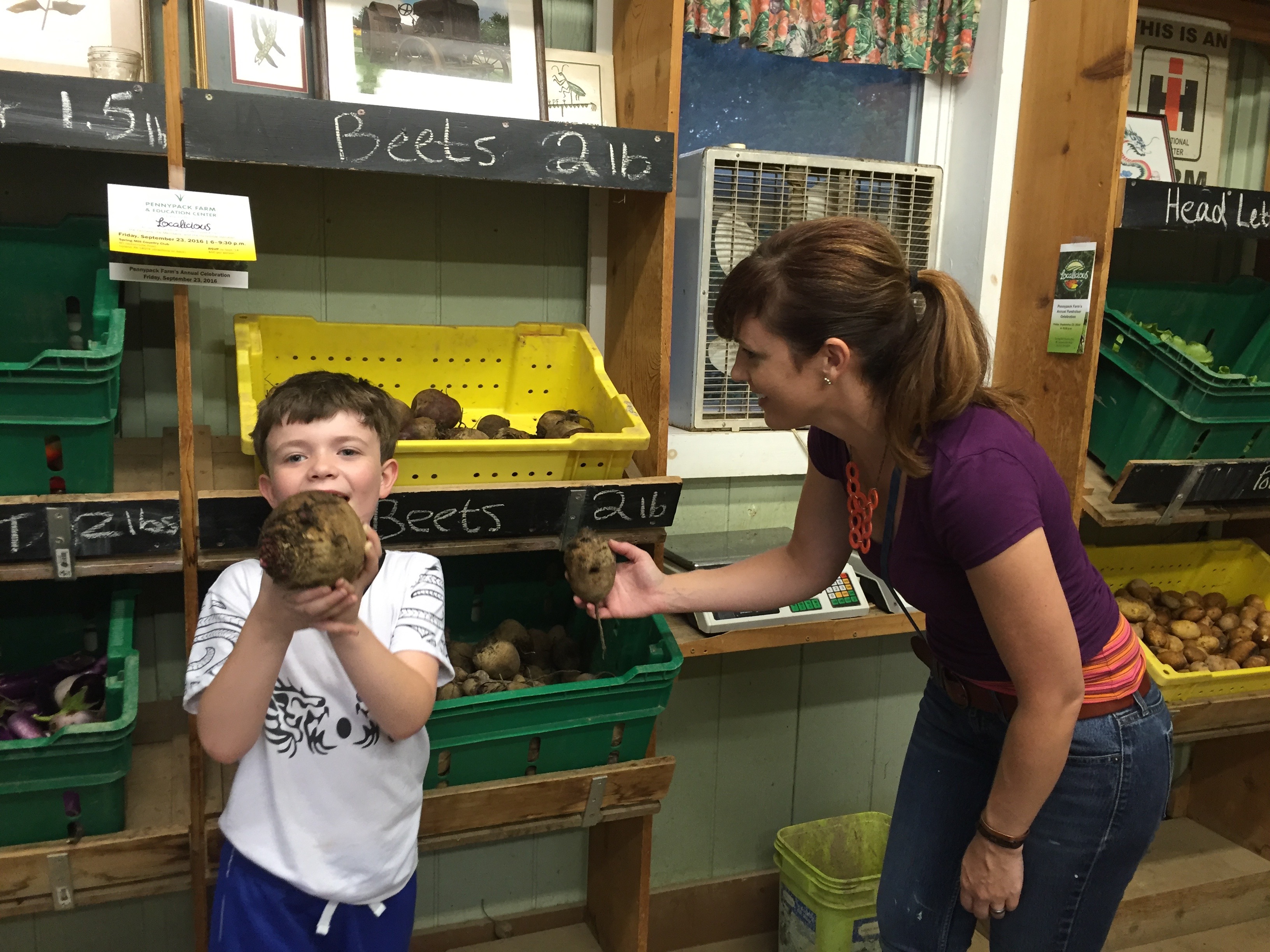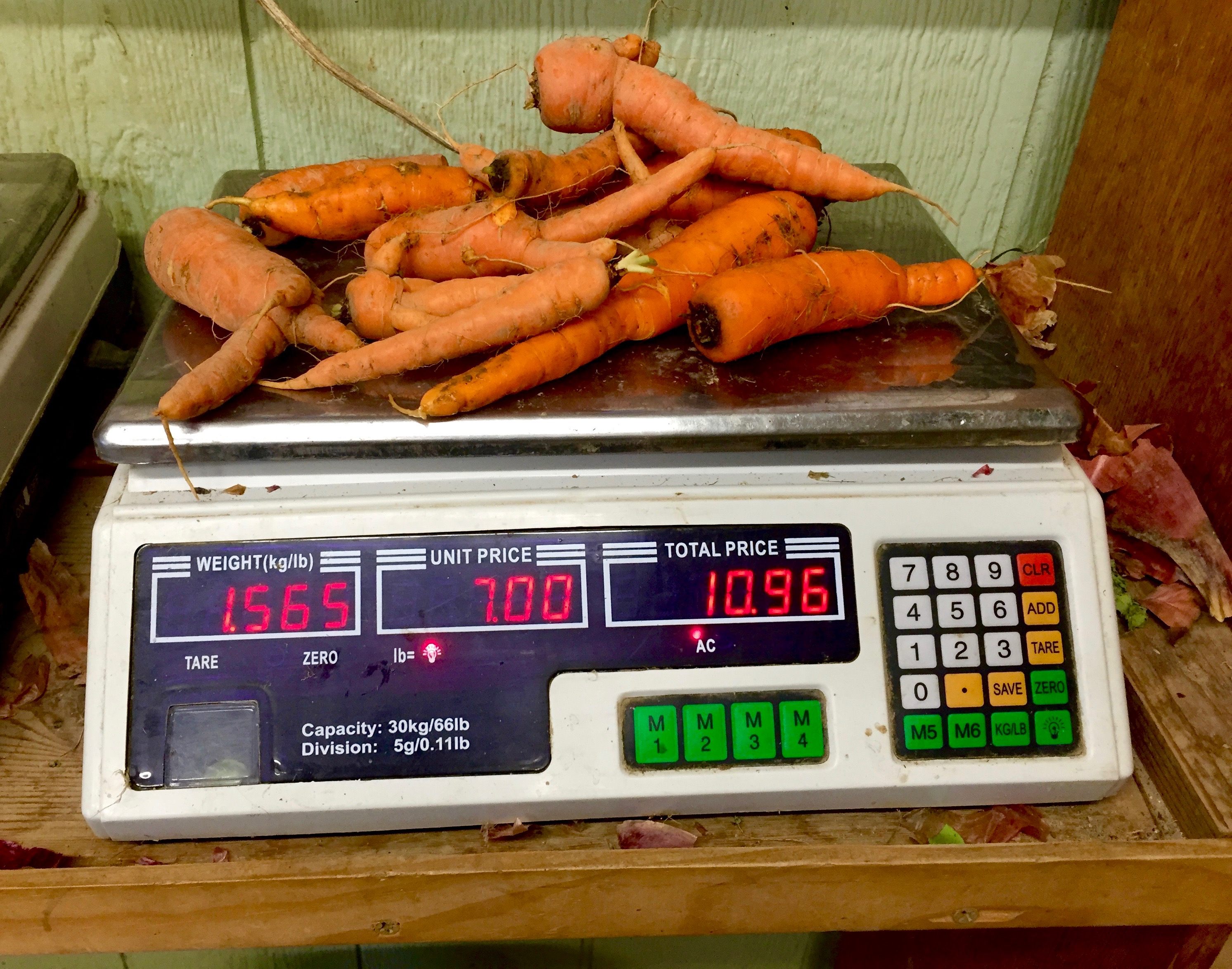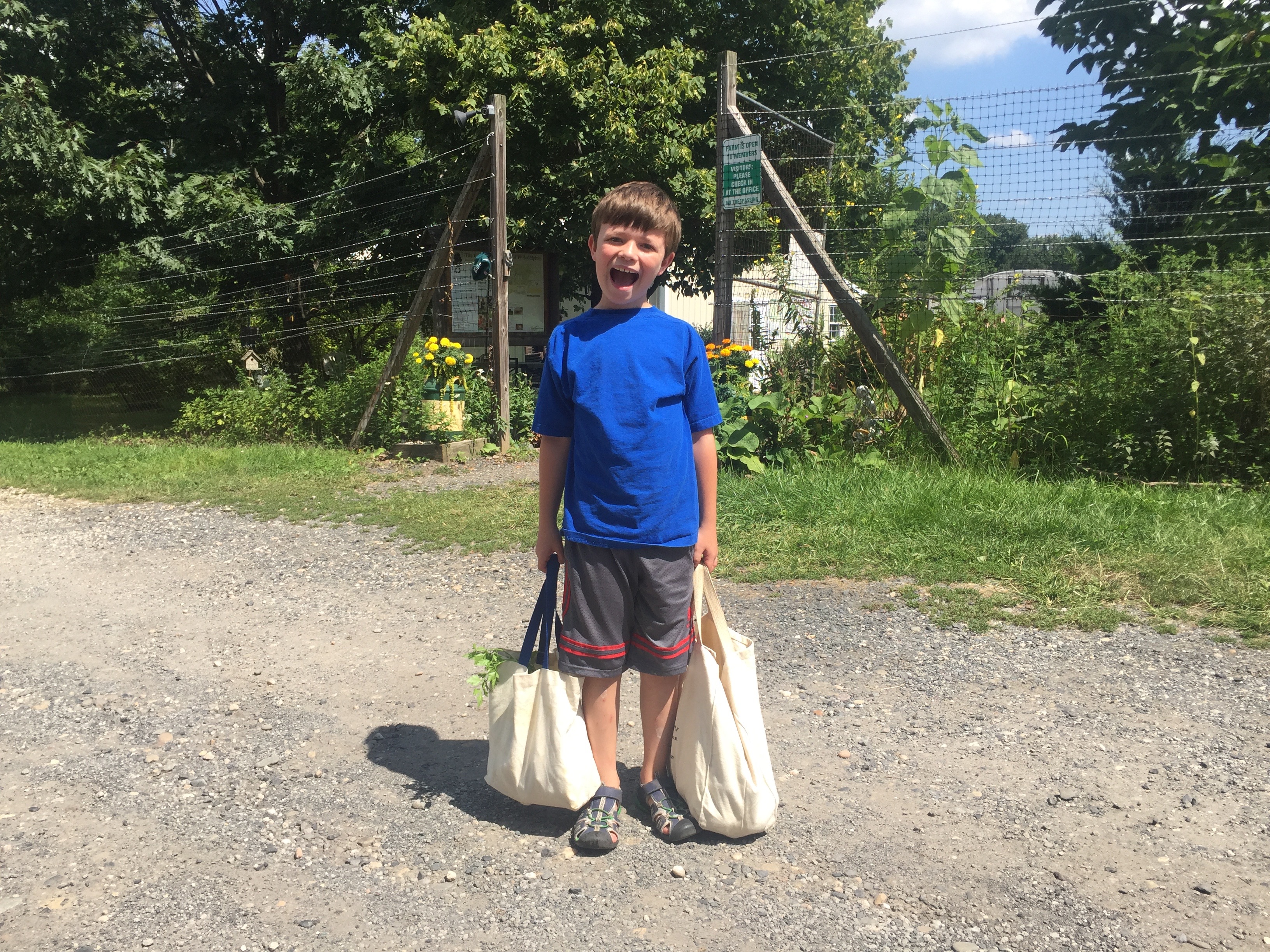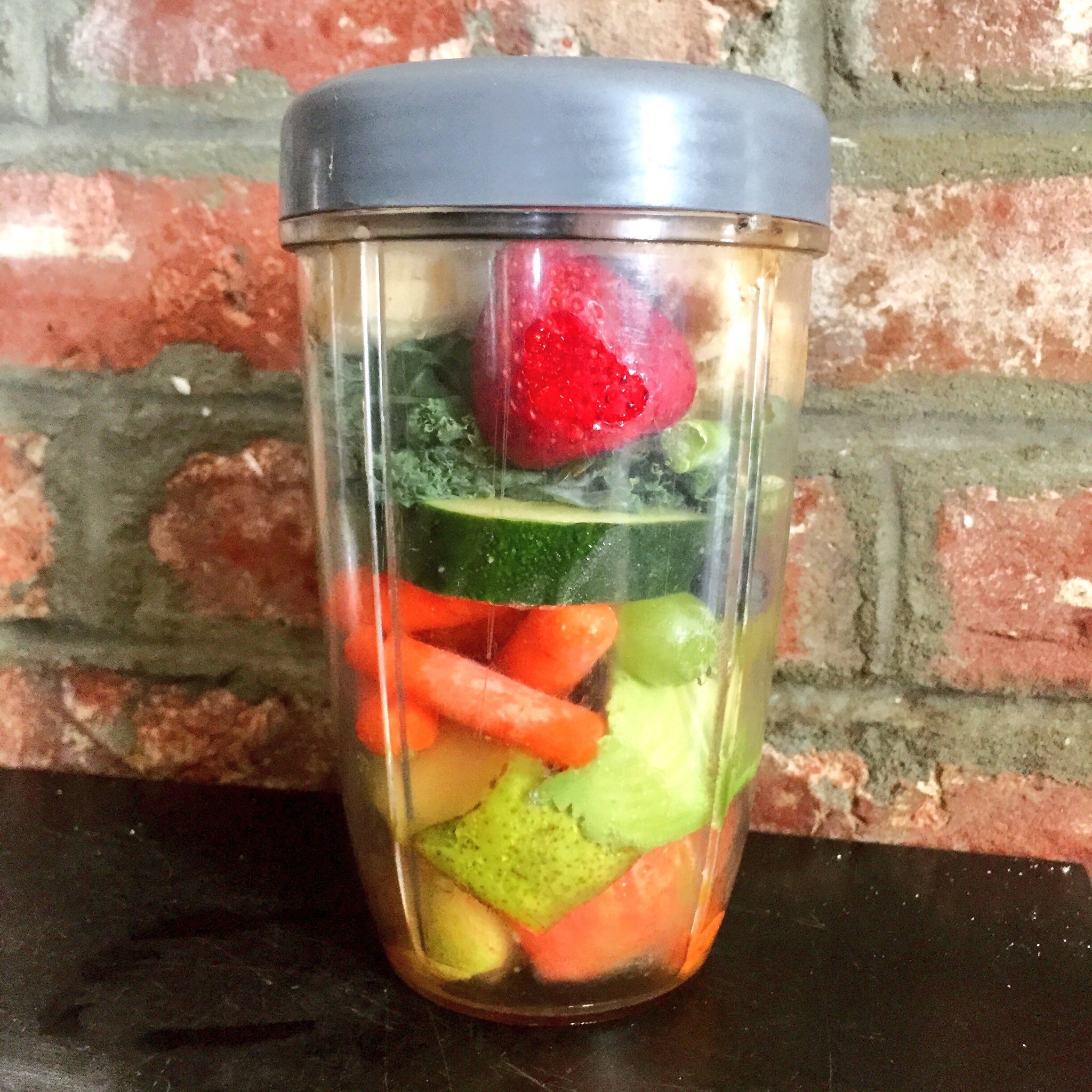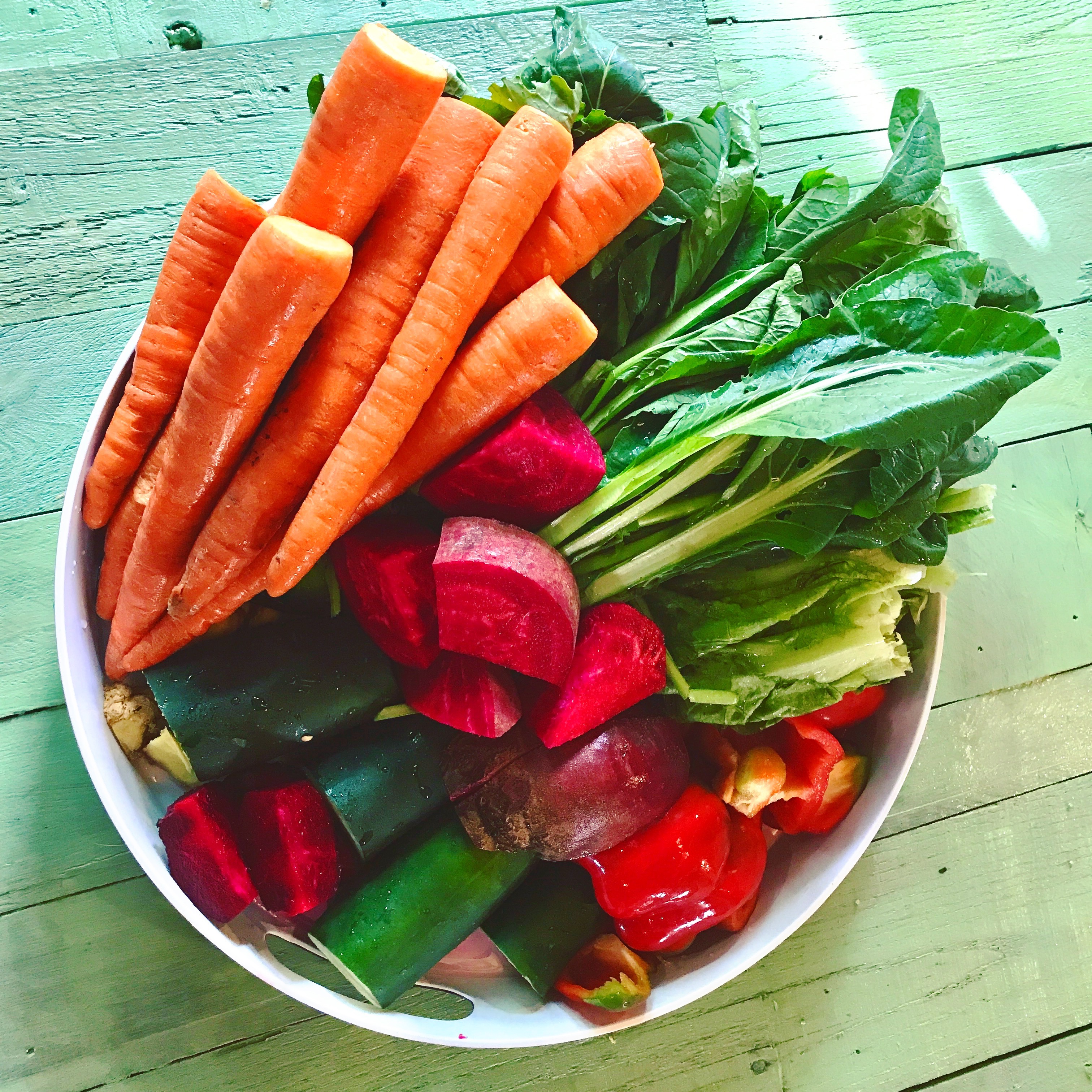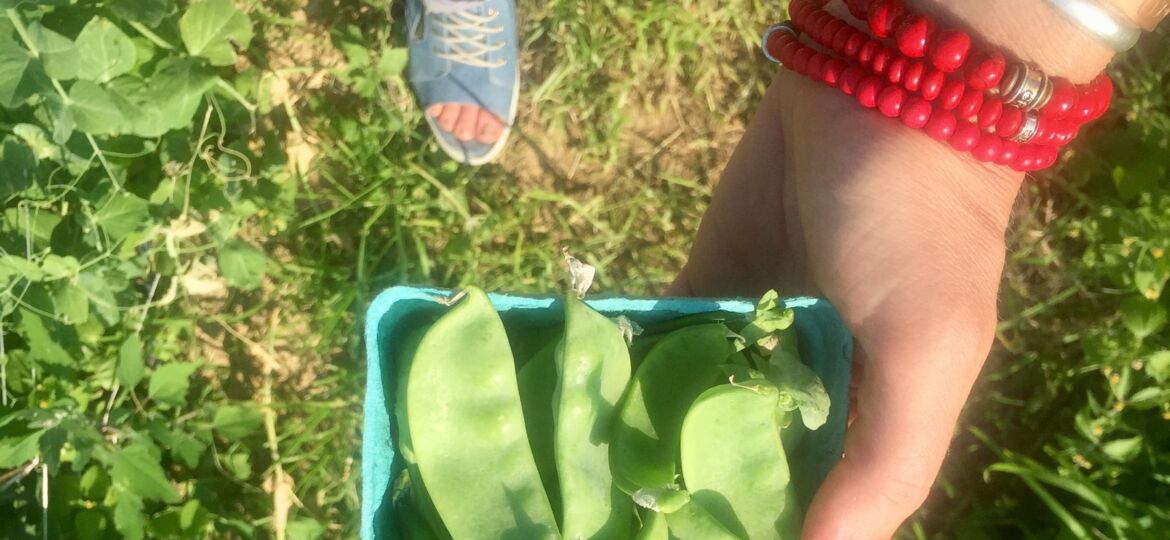
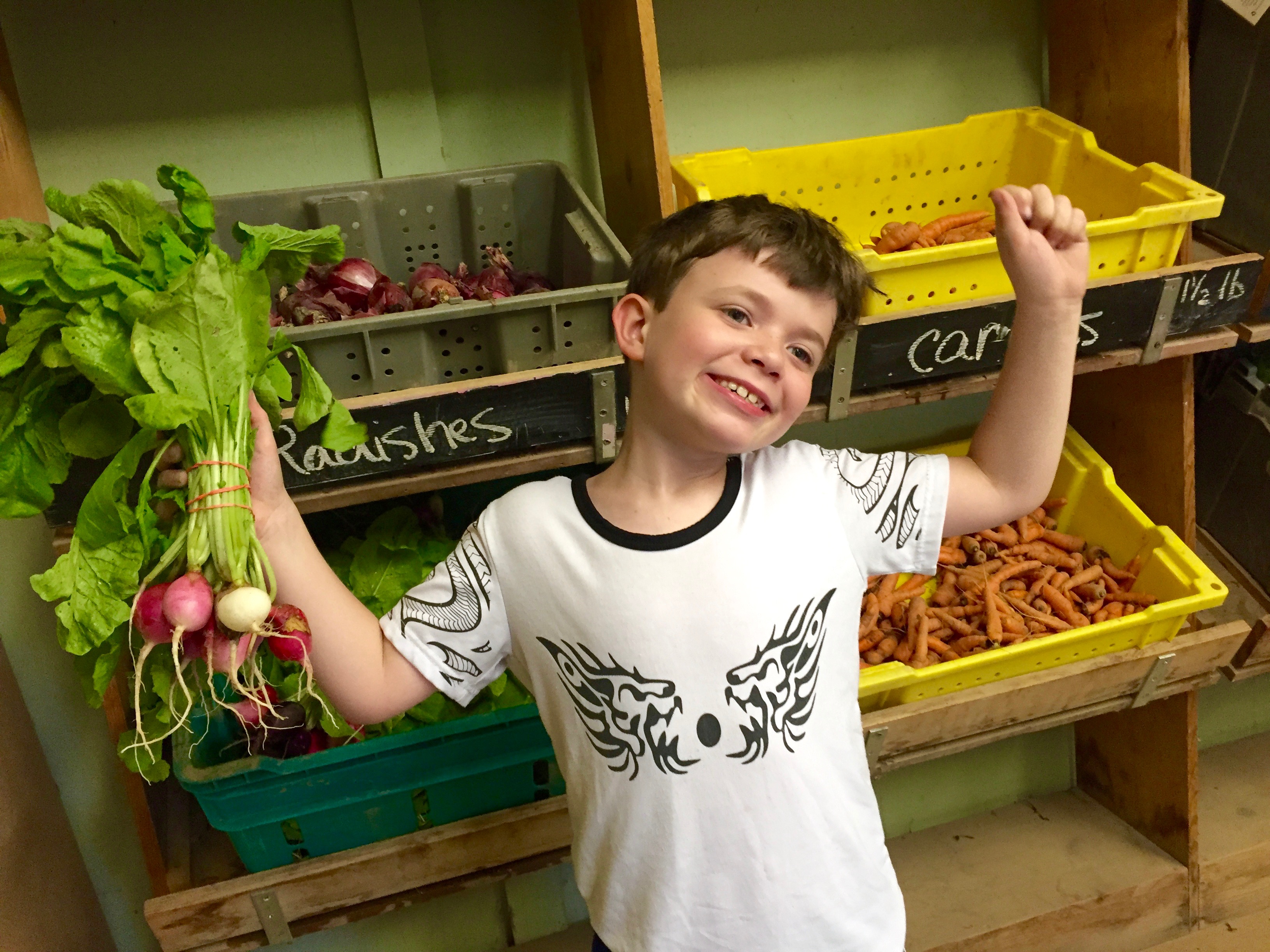
Our family consumes a lot of produce every week, and our favorite place to get our veggies is from our local Pennypack Farm.
Sometimes I feel like our kitchen counter and refrigerator look more like a farmer’s market than a family’s kitchen. We consume a lot of fresh vegetables and fruit every week. It’s not uncommon for 20 bananas or a few big bags of greens to disappear with just a few days.
And we have learned that grocery store produce isn’t as rich in nutrients as it used to be, before modern farming and large-scale food transportation. It’s nice to be able to buy a cantaloupe in November, but it always still feels weird to me to see out-of-season fruits and veggies.
When we learned that a local farm was offering a weekly community supported agriculture (CSA) share program, we joined. Since we know that we will be buying large quantities of fresh produce, committing a payment for a season of veggie shares upfront isn’t a risk. And it actually ends up saving us money and increasing the nutritional density of our food.
The other win is that we have a reason to regularly take our son Jack to the farm. Sometimes we get to go out into the field and pick some of the veggies we take home. Beyond fun for me, it’s educational for Jack, and it helps relieve some of the harvest burden from the farmers.
How do I find a local CSA farm?
If you are interested in finding a local farm that offers a CSA program, LocalHarvest has a comprehensive directory of CSA farms, with more than 4,000 listed in the database. If you aren’t ready to commit to a farm, but want to reap the benefits of local farmers, there are more than 8,700 farmer’s markets registered in the USDA’s Farmers Market Directory.
There are more than 2.1 million farms in the US, and just about 8 percent of those farms actually market foods locally, according to the American Farm Bureau Federation. We are lucky that Pennypack Farm is one of those 168,000 farms.
